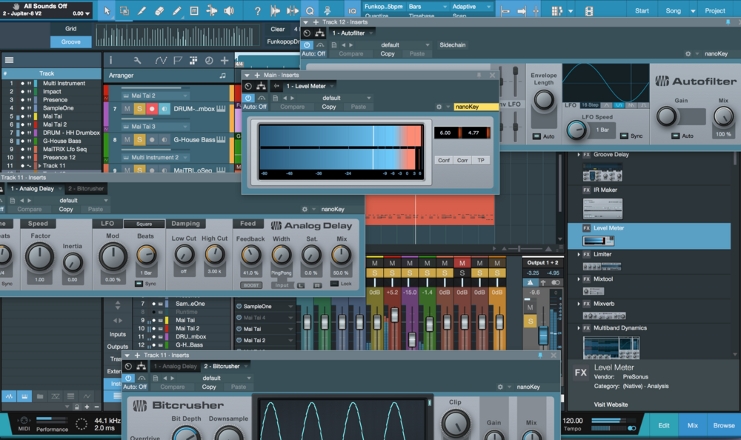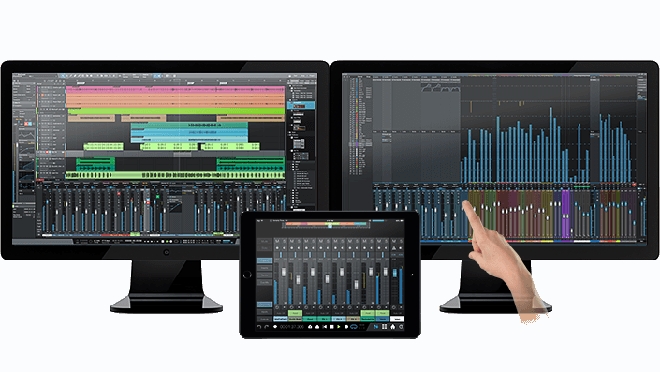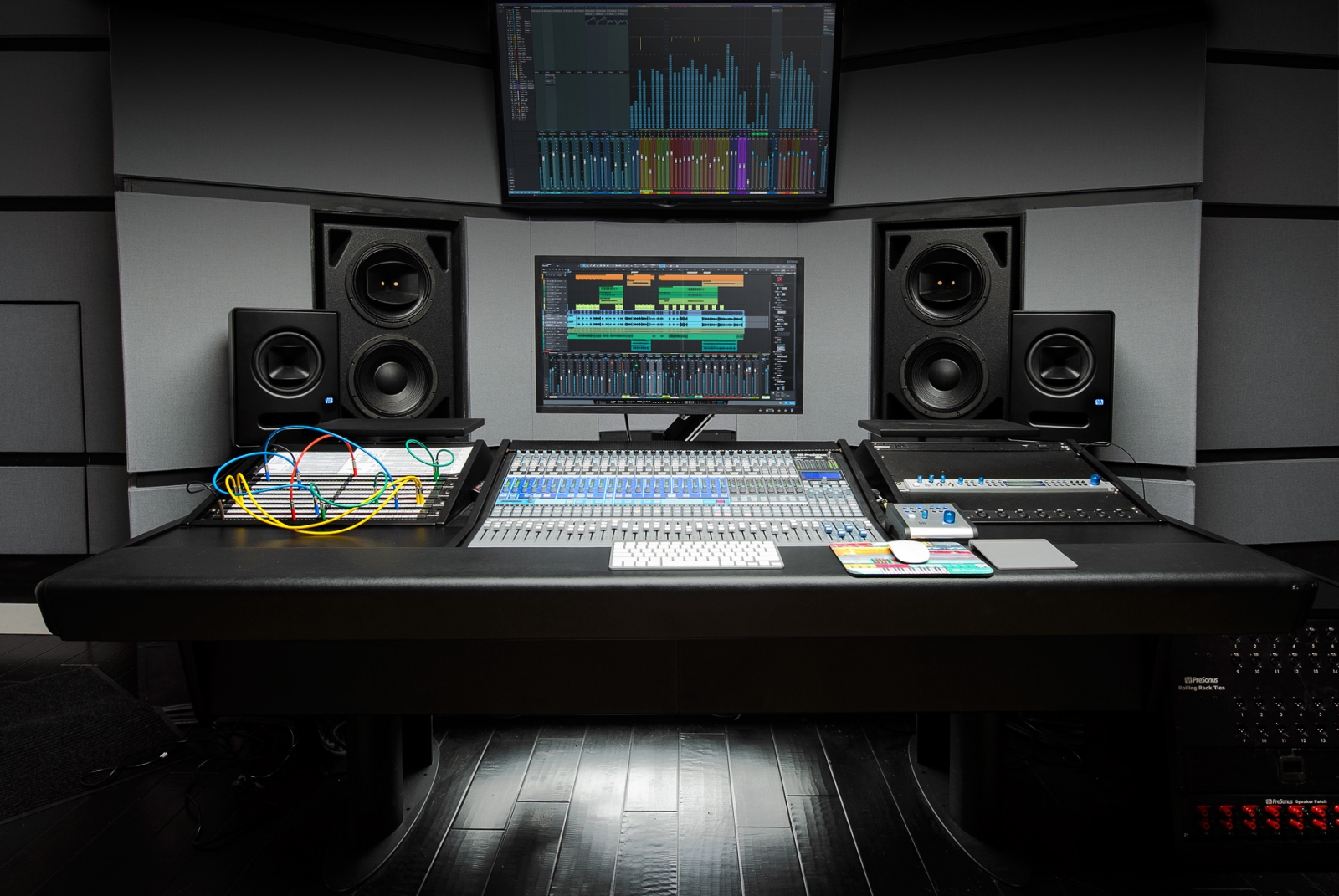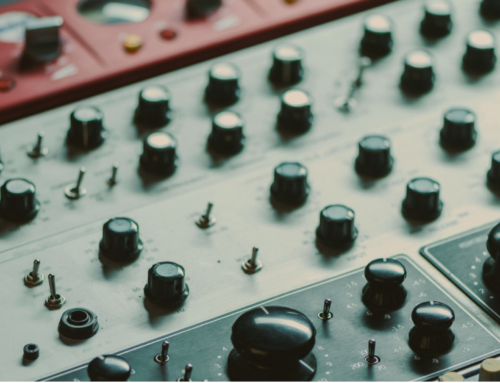After its debut, Studio One started to stand out for its strong effects, straightforward interface and usage, and easy audio and MIDI editing. Of course, as anyone will find with a DAW, Studio One had its weaknesses – mainly, a dearth of virtual instruments – and it seems that PreSonus got the message.
So, what results, is now Studio One 3, which came out back in May. Overall, the DAW is a reworking of the previous versions with about 70 new features added (more on that shortly), and seems to have been built with songwriters in mind. That’s not to say dance music producers won’t get a bang for their buck, but ultimately, Studio One 3 can be used for nearly any type of composition and production needs.
As one initial note, Studio One 3 should be familiar to those who’ve already used past Studio One DAWs, and is designed for others who’ve used ProTools, Cubase, and Logic. In either case, the basic premise is an efficient, streamlined interface with drag-and-drop features, all with the goal of allowing the musician or producer to spend more time creating tracks and less figuring out how things work.
Just to go through the features, the Start Page is where you’ll have access to all recent projects, lets you start something new, gives you access to tutorials and demos, and is where you can change your settings.
From here, you’ll likely want to spend a lot of your time on the Song page. PreSonus still used a dynamic layout: Essentially, everything is right there, without the need to move through multiple folders or windows. Too, as the start to your track, this location is where you’ll have access to Arrange view, video track, track Inspectors, edit and mix views, and the browser.
So, onto the Browser, PreSonus also upgraded this aspect. This version comes with Browser 3.0, which offers a keyword-based musical search system, plug-in thumbnails, and, through the professional version, access to nearly 10,000 audio and music loops. Should you want anything more, here is where you’ll be able to make purchases through the online marketplace and Free Exchange.
The Browser’s just one of many upgrades. The most significant – and what’s likely the biggest game-changer for Studio One 3 – is the Arranger Track feature. This intuitive function lets you effortlessly put together your song: Really, all you have to do is drag a part into the Arranger Track or Track Inspector, and the song or composition updates without issues. In use, it’s extremely flexible, especially when used in conjunction with the Scratch Pad, and truly saves you time when arranging music.
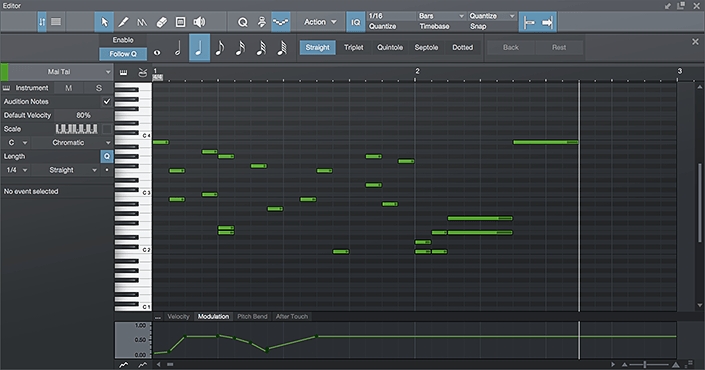 The Scratch Pads, another brand new feature, expand experimentation capabilities. When used with Arranger Track, it lets you cut off a piece to try out new things without disrupting the new composition. Basically, you drag part of the original track out, and alter it while the original stays the same. Once you’ve gone beyond the musical “sketching” stage here and found something you want to use, all you have to do is drag the “Scratch” bit back into the original.
The Scratch Pads, another brand new feature, expand experimentation capabilities. When used with Arranger Track, it lets you cut off a piece to try out new things without disrupting the new composition. Basically, you drag part of the original track out, and alter it while the original stays the same. Once you’ve gone beyond the musical “sketching” stage here and found something you want to use, all you have to do is drag the “Scratch” bit back into the original.
As far as audio and music-making capabilities go, PreSonus has stayed with its original approach. The DAW comes with unlimited audio and instrument tracks, virtual buses, FX channels, and undo/redo functions, all while 64-bit processing ensures everything remains crisp and clear. The goal, here, is to help you avoid dependence on presets (a huge complaint in EDM for the past few years), and what you get is the Multi Instruments feature.
In layman’s terms, Multi Instruments allows you to create custom instruments and works with virtual instruments, for greater sound design and layering possibilities. Overall for creating music, you’ve got something far more powerful than you’ve likely seen with Studio One. In the future, expect this area to be optimized.
Also helping you get away from the preset trap are Extended FX chains, 36 Native Effects™, and Note FX. The Extended FX lets you combine subsequent or parallel effects to be lined up in a single channel. FX can be lined up in sequence or split by frequency band or channel, while each part can be treated separately with FX chains.
For more possibilities, PreSonus equipped this DAW with a new synthesis engine and two new musical instruments. More of an upgrade than a totally new feature, the Presence XT Sampler comes with a 14GB sound library and also opens EXS Giga and Kontakt libraries. The Mai Tai polyphonic analog modeling synthesizer, on the other hand, kind of – literally and figuratively – shakes things up with an expansive and deep sound for electro and bass music – a must if you’re producing EDM.
For a third group of capabilities, Studio One 3 presents an array of helpful features for preserving, editing, and recording your tracks. You’ll get pre-recorded mode and multi-track recording capabilities; Melodyne Essentials for quick pitch and timing editing and manipulation; Folder Tracks for better organizing your music; and the Project Page, with mastering and professional effects, to keep your files up to date and assist with finishing your music.
Because technology seems to be a keystone of this new system, Studio One 3 works with nearly any device: notebooks and tablets (there’s also the free Studio One Remote app for iPad), multitouch monitors, and a computer with multiple monitors. If you have other PreSonus products in your DAW, you’re in luck, too, as the DAW can be used as part of the PreSonus Active Integration system or as a separate entity.
Features like Arranger Track, Scratch Pads, and Multi-Instruments make Studio One 3 essential for the producer or musician who really wants to spend time creating. Overall, if you’re looking for a DAW that’s easy to use with thousands of features right at your fingertips, Studio One 3 offers it all and then some.
